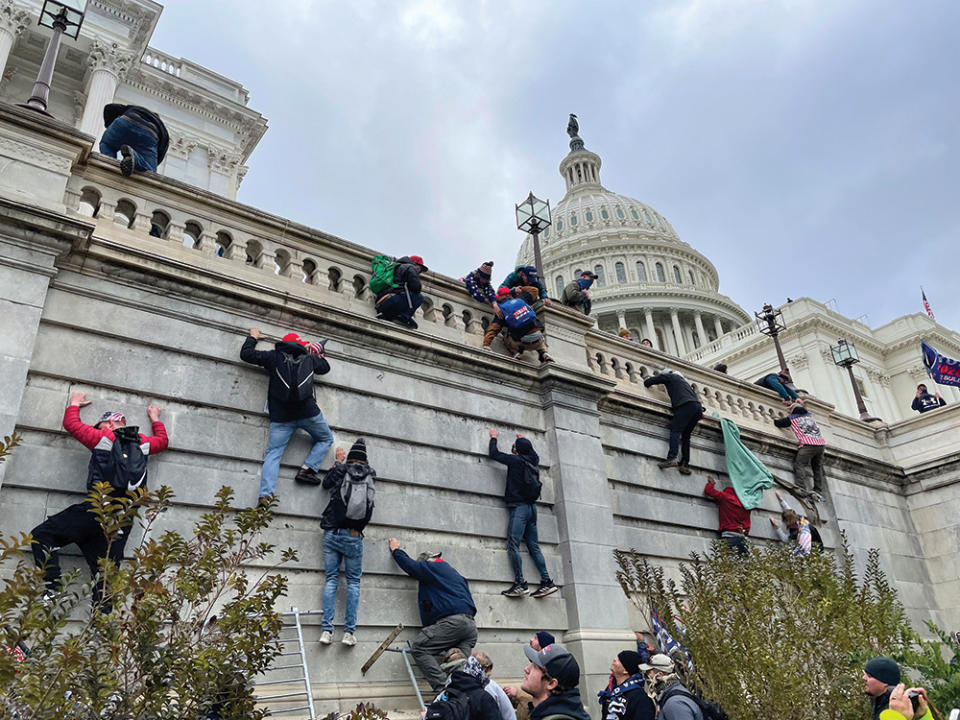TV News Keeps Spinning at a Hectic Pace Under Biden Administration
- Oops!Something went wrong.Please try again later.

One year into the Biden administration, the nation’s big TV news organizations’ hopes for a return to normalcy have yet to be borne out.
While White House activity has found a more familiar cadence during President Joe Biden’s first year — ABC News political director Rick Klein calls it “professional” — many of the TV reporters who cover the place say their working lives have yet to return to pre-Trump rhythms. The ongoing pandemic and ramped up demands for streaming initiatives have increased pressure on correspondents and news organizations at a time when traditional ratings are down.
More from Variety
NBC News' 'Meet The Press' Aims for Early Start on Midterms Coverage
Lara Logan Dropped by UTA After Comparing Anthony Fauci to Nazi Doctor Josef Mengele
Fox News Fills Out 'The Five' With Jeanine Pirro, Trio of Liberals
“Today was bananas,” says Cecilia Vega, ABC News’ chief White House correspondent, during a recent phone interview that started just after 11 a.m. — before the day was even halfway through. She had been working furiously since 5 in the morning. “Is it slower? We are not at the point at the White House where we are filing two to three stories for the evening news like we were during the Trump administration, but no, it doesn’t mean it’s slower,” she says.
When Peter Alexander covered the Trump White House for NBC News, he felt like he was whiplashed by “a 24-hour news cycle every 24 minutes.” Under President Biden, who marks his one-year anniversary in the Oval Office on Jan. 20, the NBC News co-chief White House correspondent still has a lot to digest. One early Biden initiative came with a 45-minute background call for reporters. “I could have given you 25 pages on it,” Alexander says.
As president, Trump spurred a ferocious news cycle, sending the media into spasms of alerts and social media swooning with a well-placed, wee-hours tweet. The current administration isn’t hurling invective at individual reporters or the media in general, and the White House press briefing is back in regular rotation. But the pandemic has limited the number of people who can attend each briefing, and critical face-to-face meetings between Biden officials, top editors and bureau chiefs are still difficult to finesse.
“Every day of Biden’s presidency has included COVID,” says Sam Feist, CNN Washington bureau chief. “In that respect, I wouldn’t say things are back to normal.”
There are other knots to be untangled. Washington reporters believe Biden should make himself more available for regular question-and-answer sessions, not just quick remarks to a scrum of questions after certain events. The White House announced Jan. 14 that the president would take questions at a formal news conference slated to take place Wednesday afternoon.

zz/STRF/STAR MAX/IPx
The media is trying to do its job as industry economics are in great flux. Consumer interest in news has fallen since last year, when the nation was riveted not only by the coronavirus pandemic but by the run-up to the presidential election and its aftermath, along with the Jan. 6 attack on Congress. Ratings have tumbled year over year at all three cable news networks. MSNBC saw its overall 25-to-54 audience in 2021 fall 38%, according to data from Nielsen, compared with losses of 40% for CNN and 35% for Fox News Channel. Digital traffic to many major news sites is also in decline.
At the same time, journalists have more work to do than they did in past administrations. All the major media companies have launched new streaming video and audio outlets eager to soak up the latest details, even if a story hasn’t reached its conclusion. “There are more mouths to feed,” says Alexander.
Since all the reporters who cover the White House can’t be there every day, they are in some cases moving further afield to weigh in on issues like voting rights and how that might affect different parts of the country. “In the Trump administration, a lot of coverage, generally, was personality-driven, in that who’s up, who’s down, who’s on the president’s good side, who’s he angry at today, that aspect of it,” says Arden Farhi, senior White House producer for CBS News. “While that’s always exciting in Washington to some degree, it has mostly been replaced by policy debate and legislative debates.”
Some correspondents have claimed a higher profile under the current administration. Fox News’ Peter Doocy has gained traction in social media circles for tangling with White House Press Secretary Jen Psaki. Doocy says he and his producers “do our homework” to ask about “something different that I think our audience is going to be interested in,” and credits the White House staff for trying to have answers at the ready.
There’s no question, however, that pandemic protocols are disrupting coverage. Masks make the process of asking questions of officials in public more difficult. The coronavirus adds new complexities, suggests Ken Strickland, NBC News’ Washington Bureau chief. “The news is important, but top of mind for us is our mandate to make sure everyone can be safe.”
The White House press corps is already eying the 2022 midterm elections, which could create new challenges for Biden and Democrats. “People always look at the economy when they are deciding to vote a party in power out of power or not, and how the president handles it,” says Nancy Cordes, chief White House correspondent for CBS News. “But there are hundreds of news cycles between now and then.”
Best of Variety
Sign up for Variety’s Newsletter. For the latest news, follow us on Facebook, Twitter, and Instagram.

